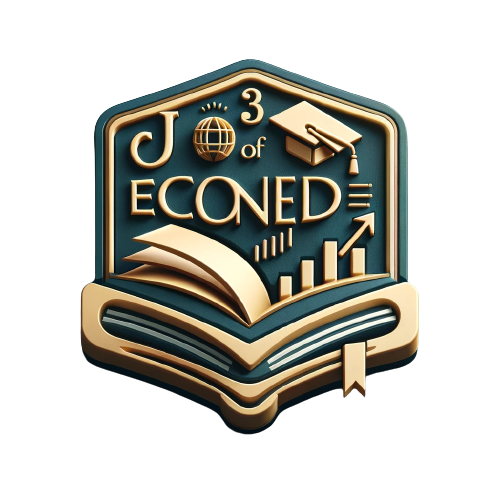Best practices in economics education
Real-World Applications of Economic Theory
Merging the intricate tapestry of economic theory with hands-on applications can significantly amplify students’ comprehension and involvement. When learners dive into real-world scenarios that vividly exemplify fundamental economic principles, they gain a richer appreciation for the significance of their studies. Picture this: case studies brimming with data, market analyses bursting with insights, and simulations that leap off the page — all these elements create visceral experiences where theoretical knowledge morphs into sharp strategic decision-making skills. Take, for example, probing into how supply and demand dynamics sway pricing; it unveils a labyrinth of consumer behavior across diverse markets.
Now toss in contemporary conundrums—think global trade intricacies, public policy debates swirling around us, or fiscal dilemmas haunting our economies—and you’ve got students forging connections between academic theories and today’s headlines. This synergy cultivates critical thinking prowess while nudging students to scrutinize economic realities through various perspectives. Engaging in discussions about hot topics like taxation controversies or the rippling impacts of monetary policy not only illuminates the practical ramifications of economic choices but also propels them toward active participation in informed conversations about urgent economic issues. This multifaceted approach doesn’t just elevate academic rigor; it primes students for their future roles as savvy citizens and adept professionals navigating the complex landscape of economics.
Bridging Classroom Learning with Current Events
Weaving current events into the tapestry of economics education isn’t just a bonus; it’s an essential thread that brings theoretical concepts to life for students. When educators spotlight real-world scenarios, the abstract becomes tangible—students plunge into a richer understanding of how economic principles unfold in the daily drama of existence. This method nudges learners to dissect contemporary dilemmas like inflation spikes, trade policy shifts, and the ever-evolving labor market dynamics through the analytical lenses they wield in their classrooms. Case studies plucked straight from recent news articles or economic reports illuminate these ideas with vivid examples that ignite curiosity and fuel lively discussions.
Moreover, tapping into current events stirs up critical thinking skills and cultivates informed citizenship—a two-for-one deal! As students grapple with the economic ripples of political maneuvers or global market tremors, they’re compelled to entertain multiple perspectives while pondering broader societal ramifications. Infusing interactive activities—think debates or simulations centered on urgent economic happenings—empowers students to dive headfirst into engagement with the material. This not only bolsters retention but also sharpens their ability to apply knowledge in practical contexts. Ultimately, this intricate dance between theory and practice equips students for whatever challenges lie ahead in their future careers.
| Current Event | Economic Concept | Key Questions for Discussion | Real-World Implications |
|---|---|---|---|
| Inflation Rate Increase (2023) | Demand-Pull Inflation | What are the causes of rising inflation? How does it affect consumer purchasing power? | Impact on cost of living and interest rates. |
| Trade Policy Changes (US-Mexico Agreement) | Comparative Advantage | How do trade agreements affect national economies? What are the potential benefits and drawbacks? | Influence on jobs and industries in participating countries. |
| Shifts in the Labor Market (Remote Work Trends) | Labor Supply and Demand | What factors have contributed to the rise of remote work? How does this change labor dynamics? | Long-term effects on urban economies and real estate. |
| Supply Chain Disruptions (Post-Pandemic Recovery) | Market Equilibrium | What role do supply chains play in economic stability? How do disruptions impact prices? | Effect on production costs and consumer goods availability. |
Diversity in Economics Curriculum
Weaving together a tapestry of diverse perspectives within the economics curriculum does wonders for student comprehension, igniting critical thinking like a spark in dry grass. An inclusive framework is not just beneficial; it’s essential. It shines a spotlight on the myriad contributions from various economic theories—think behavioral economics, feminist economics, and ecological economics—all clamoring for attention. This rich medley doesn’t merely broaden students’ intellectual horizons; it compels them to interrogate the often-taken-for-granted mainstream narratives that dominate discourse.
Imagine instructors bringing case studies alive with examples illustrating how these eclectic theories tackle real-world dilemmas! Such an approach transforms learning into a vibrant exploration of economic phenomena rather than a mere transfer of knowledge.
But wait—there’s more! Infusing different cultural and historical contexts into economics education isn’t just important; it’s vital. It nudges students toward recognizing the far-reaching implications of economic policies that ripple across global waters. By delving into the unique economic experiences woven through varied countries and communities, learners come to grasp how deeply cultural values and social structures shape economic behavior itself. Engaging in discussions around these intricate topics cultivates an atmosphere where complexity is celebrated—a fertile ground preparing students for careers in our intricately interconnected world, where every decision can have waves beyond borders.
Including Perspectives from Different Economic Schools of Thought
Weaving together a tapestry of economic theories significantly amplifies the educational journey for students, granting them a panoramic view of the field. Delving into classical, Keynesian, and even behavioral economics—among a host of others—invites learners to grasp the intricate subtleties and multifaceted layers that define economic thought. This rich blend not only prompts students to scrutinize contrasting perspectives but also encourages them to interrogate dominant narratives with an inquisitive mindset. In this manner, educators cultivate an environment ripe for exploration where students can forge their own viewpoints grounded in a well-rounded intellectual bedrock.
Embracing varied economic lenses is paramount in priming students for life’s tangled realities. Economics doesn’t operate in isolation; it dances intricately with social dynamics, cultural undercurrents, and political currents alike. When scholars immerse themselves in this vast array of economic philosophies, they hone a more resilient analytical toolkit—one that enables them to apply diverse concepts to contemporary predicaments. This ultimately nurtures informed decision-making as they embark on their professional paths ahead. Engaging deeply with divergent theories necessitates thoughtful reflection—a process that sharpens analytical prowess while deepening one’s appreciation for the discipline itself.
Professional Development for Economics Educators
The ever-evolving realm of economics demands that educators embark on a relentless journey of professional development, a crucial endeavor to keep pace with the latest teaching methodologies and emerging economic theories. Picture this: workshops buzzing with energy, conferences alive with ideas, and online courses brimming with knowledge—each an opportunity to hone instructional prowess and glean insights from fellow educators. These vibrant learning experiences cultivate a rich culture of perpetual improvement, empowering teachers to dynamically adjust their curricula in response to groundbreaking research findings and the fluctuating tides of economic realities.
But wait—there’s more! Professional development isn’t just about polishing skills; it opens doors for networking within the expansive education community. This mingling allows exposure to an exhilarating array of perspectives that can ignite innovative strategies in teaching economics. Think mentorship programs paired with collaborative initiatives—these are not mere buzzwords but powerful catalysts encouraging resource sharing and strategic synergy, ultimately elevating the quality of economics education across the board. By placing professional growth at the forefront, educators position themselves as inspiring figures who can spark curiosity in students while deepening their grasp of complex economic principles.
Opportunities for Continuous Learning and Skill Enhancement
Economic educators stand at the crossroads of a rapidly shifting landscape, where ongoing professional development isn’t just beneficial—it’s essential. The world of economics is in constant flux, and those who teach it must dive headfirst into workshops, seminars, and conferences that pulse with fresh research and innovative pedagogical techniques. Imagine immersing yourself in vibrant discussions at these gatherings; each conversation brimming with insights waiting to be unearthed!
But wait—there’s more! Online courses and certification programs are like treasure troves filled with gems of knowledge about cutting-edge teaching practices that can reshape how we engage students. Networking within professional organizations isn’t merely a pastime; it’s an electrifying exchange of ideas that ignites collaboration and fosters an atmosphere ripe for perpetual growth.
Now let’s pivot to technology—a realm bursting with potential! Integrating digital tools into the classroom is not just advantageous; it opens doors to unprecedented skill enhancement opportunities. Educators should leap into this digital age, mastering platforms designed to streamline lesson planning while simultaneously captivating student interest. Picture using data analytics software or interactive tools: they transform mundane lessons into personalized learning adventures tailored for each student’s journey!
As economic theories morph into intricate webs of complexity, those educators who embrace new technologies alongside evolving methodologies will arm their students with the armor needed to tackle future challenges head-on. In this whirlwind tapestry of education, adaptability becomes not only a trait but a necessity for success!
- Engage in regular professional development workshops to stay updated on the latest economic research and teaching methods.
- Explore online courses and certifications to enhance teaching skills and incorporate innovative practices.
- Network with peers at conferences to share experiences and gain diverse perspectives on economic education.
- Integrate digital tools into lesson plans to create interactive and engaging learning experiences for students.
- Utilize data analytics software to tailor lessons to individual student needs and improve educational outcomes.
- Stay informed about technological advancements that can enhance classroom dynamics and student engagement.
- Embrace adaptability as a core value to effectively navigate the evolving landscape of economic education.
Collaborative Learning in Economics
Group projects in economics can truly ignite a deeper understanding among students, sparking engagement with intricate concepts through the power of collaboration. It’s fascinating how sharing diverse perspectives can elevate critical thinking and sharpen problem-solving skills. This method creates an opportunity for students to tackle real-world economic dilemmas together, cultivating a richer appreciation for the intricacies woven into economic systems. By weaving in peer learning strategies, we encourage active participation—an environment springs up where insights and experiences flow freely between learners.
But it doesn’t stop there; this collaborative vibe also nurtures essential skills that reach far beyond classroom walls. Communication, negotiation, teamwork—these are not just buzzwords; they’re crucial competencies in both academic realms and the professional world waiting beyond graduation’s threshold. As students dive into joint economic analyses, they hone their abilities to articulate ideas clearly and persuasively, paving pathways toward a more cohesive grasp of economic theory intertwined with practical application. Moreover, this team-driven approach equips students with tools to adeptly navigate the convolutions of tomorrow’s economic landscape as they embark on their careers!
Group Projects and Peer Learning Strategies
Engaging students in collaborative group projects isn’t just a method; it’s a vibrant tapestry of shared experiences that deepens their grasp of economic concepts. Picture this: working within diverse teams, students find themselves not only articulating their ideas but also sparking heated debates and challenging one another’s viewpoints. This dynamic interplay leads to a more nuanced understanding of complex topics—like peeling back the layers of an onion, each discussion reveals something new.
But wait, there’s more! The collaboration itself is like a crucible where theoretical knowledge melts down into practical application, sharpening critical thinking skills while simultaneously boosting confidence in their analytical prowess. It transforms abstract theories into tangible insights.
And let’s not overlook the magic of peer learning strategies—they open doors to individual accountability and foster mutual support among learners. Imagine students leveraging each other’s strengths while collectively tackling gaps in understanding through lively dialogue and constructive feedback. This synergy doesn’t just solidify what they’ve absorbed; it nurtures vital soft skills—think communication finesse and conflict resolution mastery—that are absolutely priceless in economics and beyond!
The Importance of Ethical Considerations in Economics
Grasping the ethical ramifications of economic choices is absolutely paramount in shaping students into conscientious citizens and savvy professionals. Yet, here’s the kicker: many economic theories often sidestep or outright ignore the societal ripple effects of policies and practices. By placing a spotlight on ethical considerations, educators can ignite critical thinking flames, urging students to dissect how economic actions reverberate across a myriad of stakeholders. Engaging in spirited discussions about hot-button issues like income inequality, environmental sustainability, and corporate governance enables learners to perceive the vast tapestry within which these economic threads are woven.
Weaving ethics into the economics curriculum doesn’t merely enhance the educational journey; it also instills a profound sense of social responsibility among students. Case studies that delve into real-world conundrums challenge them to grapple with intricate moral dilemmas—questions that rise beyond mere numbers and graphs. This kind of engagement propels them to evaluate not only how efficiently an action operates but also its fairness and equity in practice. By crafting a robust framework for ethical reasoning, educators can arm future economists with essential tools for navigating today’s complex economies while keeping society’s welfare firmly in their sights.
Teaching the Social Responsibility of Economic Decisions
Weaving ethical threads into the fabric of economics education transforms students into astute observers, capable of discerning the far-reaching ramifications of economic choices on both society and our fragile environment. As they delve into case studies where financial gains collide with humanitarian values, a rich tapestry of understanding emerges, illuminating how policies ripple through diverse communities. This method underscores the critical roles of sustainability, equity, and justice in economic discourse.
Engaging students in lively dialogues about real-world situations ignites their critical thinking skills concerning the moral duties that economic actors bear—a vital component in sculpting tomorrow’s leaders.
To elevate this learning odyssey even further, educators can introduce frameworks designed to dissect ethical quandaries within economic landscapes. Equipping students with analytical tools to scrutinize the social consequences stemming from their decisions empowers them to evolve into conscientious economists—those who grasp not just numbers but also humanity behind them. By shining a spotlight on the human stakes woven throughout economic theories, learners are more inclined to recognize the intricate web connecting economic systems with societal well-being. This preparation enriches their academic experience and instills an enduring sense of responsibility as they chart their professional pathways ahead.
Conclusion
Economics education is absolutely pivotal in gearing up students to tackle the labyrinthine challenges of our contemporary world. By weaving together real-world applications, a rich tapestry of diverse curricula, and dynamic collaborative learning strategies, educators can ignite a profound grasp of economic principles. This intricate approach does more than just boost academic engagement; it arms students with the analytical arsenal they need to maneuver through societal quandaries.
Moreover, ongoing professional development for educators is essential—it keeps them abreast of the latest theories and practices swirling around in the economic sphere. Spotlighting ethical considerations within economics nudges students to acknowledge their social responsibilities. In this way, the education system nurtures individuals who are not merely well-informed but also conscientious stewards contributing meaningfully to society at large.







